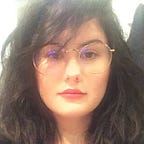The life of a research book
Almost one year ago, collaborating with the Biennale of Paris and the École Nationale d’Art (ENDA), I started working on a research book that retraces the history of invisual art and of its initiator Alexandre Gurita. I know that the next question will be: « What is invisual art ? » Well in order to get rid of this intellectual tricky doubt, so we can go to the real topic, I would say, in a nutshell, that invisual art is an artistic exercise that promotes an art without works of art. I know, not clear enough, let me try it again. So invisual art believes that the object (a painting or a sculpture) is not inherent to art. The reflection of the artist prevails and it cannot be encapsulated into an economically exploitable item. Therefore, no more works of art, no more art market, no more added value or sentences like “look how fancy am I, I’ve got art hanging on my walls”.
The reason of me writing this article for you today is because I had a lot of questions regarding the methodology of a paper. How to go from “zero to something” (something being the book of course)? There is no miracle recipe, only a lot of work and a few not quite simple steps that I am going to explain in this present article and in the next ones. Don’t worry, there are like three concrete steps, thank god we are not writing a book about how to write a book.
Firstly, research means investigating systematically about a certain topic, in order to establish facts or to get to new, more accurate, conclusions. In this case the writing should be objective. By objective I mean banning approaches like “I think or I believe”, no one cares about that, and using instead an almost mathematical pragmatism which would go like “This is what I found, so based on it I can prove that…”.
A. First step (I know there are two steps in the first step, well life is just not fair)
I. Make a list with the features of your paper
- Aim — Establish your target audience. What are you trying to prove with this paper?
- Expression — Once you have set your potential audience you can decide about the way you are going to write (e.g.: accessible to everyone (which means that some things are going to be explained several times, in the same paragraph, with different words); technical (make sure to use every word properly, any mistake in vocabulary in this case it’s a liability).
- Authority — A rich bibliography is needed in order to prove the value of your research. Also links to different fields can show a polyvalent mind and full comprehension of the topic. (in my case I am going to use philosophy or literature or even science to back-up invisual art).
- Illustrations — It depends on the subject, but it is important to think if it’s necessary or not. Most of the time images are landmarks for the readers.
- Length — Decide the number of pages from the beginning, it’s good to know where are you heading to.
- Deadline — Give yourself a time for the project and try to stick to it.
Keep this list as a reference so you can go back from time to time, this way you are sure you are not forgetting your goals. I think it is needless for me to go into cliché sentences and say that organization is the key to success.
II. Try to draw a first plan
Even though the subject is ambiguous at first, a plan with chapters showing the progress of the paper would be extremely important. The plan can be modified, as many times as you want once the research has been engaged, because there are going to be more elements to be added and the perception of what you are writing about is going to change. But do not change the plan completely every time, this is the best way to get totally lost and never finish the paper.
The second step is Bibliography, but we will talk about this in the next article dedicated to the research book. In the meanwhile the only thing that matters is reading, reading and again reading, because as Seneca said it :
“Reading is in my opinion necessary: first, it prevents me from being satisfied with my own person; Then, as I learn about others’ research, I can judge their discoveries and think about what remains to be discovered.”
